BoB is devoted to bringing the best of brass music to its audience – including music from our own back yard! These are some of the local composers (and a few we/Australia have inspired) we had the pleasure of collaborating with and their respective works (click on the name/work for more information):
Suite for Short Attention Spans (2013)
Graeme Wright Denniss *** COMPOSER IN RESIDENCE 2014- ***
Five Grungers for Brass (1983, rev. 2012)
Five Variants for Brass Septet (2012)
inner tube for horn, trombone and tuba (2014/rev. 2016) – (watch videos here: 1+2 – 3)
Mixed Business III: Fanfare (2014) – (watch video here)
Mixed Business III: Hornby Dublo Class 14XX (2013) – (watch video here)
Mixed Business III: The Legend of T-Bone Snake (2010)
The Three Horned Cat (2015) – (watch videos here: 1 – 2 – 3 – 4 – 5 – 6 – 7 – 8 – 9)
Wa Wa Waltz (2000, rev. 2012) – (watch video here)
Dances nos. 1 & 2 from the Book of Bronze (2012)
Dances nos. 3 & 4 from the Book of Bronze (2014)
Terra Firma (2014/2015) – (watch videos here: 1 – 2 – 3)
Twinkle Variations (2016) – Julian Yu/arr. Carol Dixon – (watch video here)
Concierto Sinfónico para Metales (2018) – (watch video here)
Later & Elsewhere (2010, rev. 2013) – (watch video here)
Visions of the Apocalypse (2017) – (watch videos here: 1 – 2 – 3)
Axolotl Rag (2014) – (watch video here)
It Comes and Goes (2013) – (watch video here)
Driefacher (2012) – (watch video here)
BBQ4 – A bit of Celtic Fanfare (2014) – (watch video here)
after this, our exile (2013) – (watch video here)
Waltzing Matilda (2016) – (watch video here)
Perpetual Moment (2013, rev. 2014) – (watch video here)
Twinkle Variations (2016) – arr. Carol Dixon – (watch video here)
Max Berger
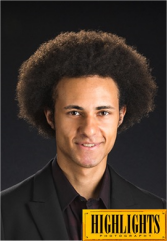
*Bio coming soon*
Tango de Fuego y Hielo (2018)
I had recently listened to a few tangos and decided to challenge myself to write one. In IB Literature A, I studied a poem by Robert Frost titled “Fire and Ice” which discusses the end of the world. Frost likens fire with desire and ice with hate. I wanted to convey these emotions in my piece and create imagery of people dancing the tango as the world crumbles around them.
I started with the main rhythms of the piece, dotted crotchets, a lot of syncopation and a strong tango feel. In the A section, I wanted to create a serious mood, because it is about the end of the world. I did this by writing in a minor key with an octave bass line in the left hand and a strong beat. I added short moments of silence to create tension. In section B, I wrote staccato block chords for the right hand and gave the melody to the left hand to create a sense of the mighty force of desire and hate destroying the world.
*BoB note: Tango de Fuego y Hielo was originally a composition for piano solo, orchestrated by Armin for BoB
Tango de Fuego y Hielo was premiered at the BoB – Best of Brass and Cairns State High Winter Brass School, August 26, 2018, Cairns State High School.
Jonathan (Joff) Bush

Joff Bush is a mammal with reddish hair and a musical disposition. One of Australia’s rising talents in the field of composition for the stage and screen, his work can be spotted amongst many different mediums including concerts theatre, films, audiobooks, documentaries, commercials, games and new media. Joff’s commercial work includes providing the soundtrack to brands such as CocaCola, Microsoft, Converse, and Vogue while his television and film work has led him to be one of ASCAP’s ‘Composers to Watch for 2013’. Amongst his television scores, he is perhaps best known for his work on the ABC comedy / drama series ‘The Strange Calls’ and live commissions have included ‘When it Rises’ and ‘Buskers Suite’.
Joff Bush studied keyboard and composition at the Queensland Conservatorium and the Australian Film Television and Radio School where he developed a nerdy interest in the musical dramaturgical techniques of post-war Japanese cinema.
For more information, visit www.joffbush.com.
Suite for Short Attention Spans (2013)
One of the difficulties associated with luring people to concerts of new music, I am told, is the fear of being stuck listening to a long piece that’s not to one’s taste.
Fortunately, not only do BoB sound delectable but if you have a short attention span then this piece is designed for you. It is a five movement suite that lasts just five minutes. If any of the movements are not to your taste they’ll be over before you know it. It’s a delicious ploughman’s lunch of suites.
Furthermore, it follows some of the classic film music techniques of the 1940s. I invite listeners to imagine their own drama as seen through little glimpses of the movements of this suite.
Suite for Short Attention Spans was premiered in “More Australian Music for Brass”, July 24, 2013, Ian Hanger Recital Hall, Queensland Conservatorium Griffith University.
Graeme Wright Denniss
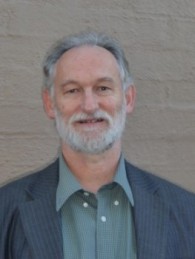
Graeme Wright Denniss was the Principal Third Horn in the Melbourne Symphony Orchestra for 14 years, and has played in many brass groups including the Melbourne Brass Trio, the Melbourne Brass Ensemble (quintet) and Buzz (quartet). He has written a number of pieces for each of these groups, and has a performer’s knowledge of the sound potentials of brass instruments in various combinations.
Graeme has a PhD in composition from the University of Queensland and was recently awarded an Honorary Fellowship of the National Academy of Music, Colorado U.S.A., for his success in the International Music Prizes competition. His works have been performed and recorded by the Melbourne and Tasmanian Symphony Orchestras, the Queensland Philharmonic and Youth Orchestras, as well as many smaller ensembles. He won the Dorian leGallienne award in 1987 with “Songs of the Priestess of the Moon”, and was awarded an Australia Council grant in 1997 for “Wrestling Kali”, performed by Brisbane group Topology. Graeme’s compositions appear on AMEB and ANZCA syllabuses for French horn, bass clarinet and piano duet. Graeme is a Represented Composer with the Australian Music Centre and has recently been appointed Artistic Director and Conductor of the Redland Sinfonia.
For more information, visit www.dcomposition.com.
Five Grungers for Brass (1983, rev. 2012)
1. Fanfare
2. Valse Melancolique
3. Scherzo
4. Offertory
5. Walking
Five Grungers for Brass was originally written in 1983 for the Melbourne Brass Trio, with Geoff Payne (trumpet), Brett Kelly (trombone) and the composer on horn. A suite of contrasting pieces, the work has been performed many times as a brass trio, some movements as a quartet performed by Buzz, and now the work has been recently rescored with minor alterations for the Best of Brass Quintet.
1. “Fanfare” utilizes constantly changing metres and quartal harmony to give a punchy opening to the collection
2. “Valse Melancolique” makes extensive use of mutes and glissandi to produce a lugubrious effect
3. “Scherzo” is a virtuoso movement with rapid whole tone scales and sudden register and dynamic changes
4. “Offertory”. This movement is the heart of the work, with long cantabile melodies accompanied by a cross between Renaissance and modal harmonies
5. “Walking” is a spiky version of the Count Basie style walking bass and provides an exhilarating ending to the suite
Five Grungers for Brass in the quintet version was premiered in “Australian Music for Brass”, July 25, 2012, Ian Hanger Recital Hall, Queensland Conservatorium Griffith University.
Five Variants for Brass Septet (2012)
1. Bach torte: a Few Gateaux
2. Merci Anne
3. La Valse d’un Papa
4. The High Corral
5. Grand Finale: Mariachi Meltdown
To make up the Septet, two instruments have been added to the Quintet, a Tuba and another Horn. Both these instruments have conical bores which add a rich depth of sound, complementing the brilliance of the cylindrical brass.
Rather than being Variations on a Theme, these Variants are based on the sounds inherent in a synthetic mode, devised for this piece and used in three transpositions. Each instrument explores the potential within this mode according to its particular bent. Other unifying factors are found in the number “7”, used in time signatures and phrase lengths.
1. “Bach torte: a few Gateaux” is my homage to Bach and particularly to the marzipan cake which bears his name, served with coffee or hot chocolate in the little café opposite St Thomas’ Church in Leipzig. The opening theme for the Tuba uses big slurs in the low register.
2. Modelled on the techniques of Messiaen, the Horn’s lyrical qualities set the mood in the second Variant: “Merci Anne”. The Flugel Horn has a guest spot before the lead Trumpet scales the dizzy heights of Mt Parnassus.
3. The Trombone takes the lead in the “Valse d’un Papa”, setting the style with glissandi and growls, echoed by half-stopped horns and harmon-muted trumpets With Plunger.
4. “The High Corral” is a series of wedge–‐shaped harmonies which feature the high registers of the whole band.
5. Trumpets strut their stuff in the eagerly anticipated Grand Finale, “Mariachi Meltdown”, held under the big top.
Five Variants for Brass Septet was premiered in “More Australian Music for Brass”, July 24, 2013, Ian Hanger Recital Hall, Queensland Conservatorium Griffith University.
inner tube for horn, trombone and tuba (2014/rev. 2016) – (watch videos here: 1+2 – 3)
i. tuba
ii. horn
iii. trombone
The 3 movements in this work explore the essential nature of each instrument. The tuba begins with a playful agile theme within constantly changing metres, accompanied with epigrammatic figures from the two upper instruments, sometimes mutes for a different colour.
The second movement explores the lyrical character of the horn, with slow moving melodies which cover the large range of the instrument.
Finally the trombone, the most physically demanding of all the brass, plays a flamboyant hornpipe mostly in 7/8, with energetic driving rhythms.
inner tube for horn, trombone and tuba was premiered in “OzBrass 3”, July 27, 2014, St Andrews South Brisbane. The revised version for horn, trombone and bass trombone was premiered in “OzBrass 5”, August 3, 2016, Innisfail Conservatorium.
Mixed Business III: Fanfare (2014) – (watch video here)
Fanfares have been used throughout history to announce the arrival of an important person or to start the show. This one uses strong rhythms and a mixture of harmonies including chords based on 4ths.
Mixed Business III: Fanfare was premiered in “OzBrass 3”, July 27, 2014, St Andrews South Brisbane.
Mixed Business III: Hornby Dublo Class 14XX (2013) – (watch video here)
Hornby Dublo Class 14XX depicts an imaginary train journey of the model train the composer played with as a boy. Various sound effects are used to imitate the sound of a steam train.
Mixed Business III: Hornby Dublo Class 14XX was premiered in “OzBrass 3”, July 27, 2014, St Andrews South Brisbane.
Mixed Business III: The Legend of T-Bone Snake (2012)
The work features the trombone as soloist, capturing the strutting quality of the instrument, backed up by edgy chords and rhythms from the rest of the quintet. It was written for Greg Aitken.
Mixed Business III: The Legend of T-Bone Snake was premiered in “Australian Music for Brass”, July 25, 2012, Ian Hanger Recital Hall, Queensland Conservatorium Griffith University.
The Three Horned Cat (2015) – (watch videos here: 1 – 2 – 3 – 4 – 5 – 6 – 7 – 8 – 9)
1. Swing the Cat
2. Catalan Sarabande
3. Catnip Tango
4. Cataclysm
5. Catnap – Berceuse
6. The Catwalk
7. Caterwauling Waltz
8. The Cool Cat Fugue (Hommage to Scarlatti)
9. The Catflap Charleston
Word play is involved in this suite of pieces on a number of levels. I had just performed some music by Manuel de Falla, which led me to explore some more of his repertoire, and the title of my suite relates directly to one of his pieces. The original version was written for 3 horns, as you would expect, but can be performed in this arrangement for brass quintet, or by any three like-minded instruments.
There are of course nine movements, and the composition of each one started with the title, which had to include the word “cat”. The music was then created to fit the title, and had to fit a number of criteria: Timings were to be around 2 minutes each, the pieces needed to avoid anything purely technical, ranges were to be modest and the pieces needed to be fun to play and to listen to.
The suite contains an eclectic mix of styles, starting with jazz then moving to a Renaissance dance, which then leads to an Argentinian tango. One movement, “Cataclysm” is more discordant and edgy than all the rest, and another explores the conventions of fugue. All in all they are written for the enjoyment of the players and hopefully of the audience.
Four movements from The Three Horned Cat (Swing the Cat, Catnap – Berceuse, The Cool Cat Fugue, and The Catflap Charleston) were premiered in “OzBrass 4”, August 25, 2015, Ian Hanger Recital Hall, Queensland Conservatorium Griffith University. The full suite was premiered in “OzBrass 5”, August 3, 2016, Innisfail Conservatorium.
Wa Wa Waltz (2000, rev. 2012) – (watch video here)
The Wa Wa Waltz had its beginnings when the composer was the French horn player in “Buzz, a brass quartet which toured for Musica Viva In Schools in the early 2000’s. As part of the concert, each member of the group demonstrated the sound of mutes, and the descending chromatic figure using the harmon mute with the plunger in was the favourite of the lead trumpeter. It was also very popular with the primary students due to its association with something going wrong in a cartoon.
In order to have an entire piece which demonstrated the mutes, Graeme took the opening figure and extended it into a humorous waltz theme. Originally the piece was quite short, but the formation of the new brass quintet, BoB – Best of Brass, gave an opportunity to expand and extend the piece to include solos for all the instruments, each with its own characteristic effects. The new extended play version of the Wa Wa Waltz for quintet has elements of burlesque and vaudeville, as well as maintaining the cartoon feel of the original.
Special effects include: Harmon mutes with the plunger in, (aka the Wa Wa mute), a variety of other mutes, hand-stopping on the French horn, flutter-tonguing for the upper brass, and glissando for the two trombones.
The Wa Wa Waltz was finally “premiered” (in concert) in “OzBrass 3”, July 27, 2014, St Andrews South Brisbane, after having been a featured work in BoB – Best of Brass’ Musica Viva in Schools show for 2 years and 50+ performances.
Gerardo Dirié
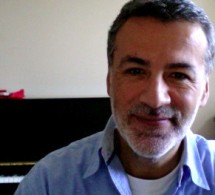
Born in Cordoba, Argentina, composer Gerardo Dirié is an accomplished composer, conductor, performer, and educator.
As a composer, he has had many acclaims and performances in the United States, Latin America and Europe. In 1994, he was a prize winner in the National Tribune of Electroacoustic Music in Argentina. His choral work Canto de Amores Entre Ausencias won the Honorary Mention in the NISSIM ASCAP International Composition Competition in 1993. In 1991, 1992, 1993, 1995 and 1996 he was distinguished with the Standard Awards from the American Society of Composers, Authors and Publishers for the performance of his compositions. During the most recent years his music has also been performed in India, Malaysia, Turkey, Colombia, Venezuela, Belgium, Germany, and Denmark.
Dirié holds Master and Doctor in Music Composition degrees from Indiana University, where he studied with John Eaton and Eugene O’Brien. Prior to coming to Indiana, he attended the Universidad Nacional de Cordoba, Argentina, studying composition with Atilio Argüello, Oscar Bazán, and César Franchisena. Gerardo Dirié is currently Head of Music Studies at the Queensland Conservatorium in Brisbane, Australia.
For more information, visit www.gerardodirie.net.
Dances from the Book of Bronze (2012)
No. 1
No. 2
No. 2 (with percussion)
No. 3
No. 4
These compositions were written for the BoB ensemble and with gracious consideration for the refined skills of the musicians in this group. The two dances are in contrasting character joined in similar manner as in dances from the Renaissance and Baroque eras. The first movement presents an opportunity for the musicians and audiences to attune to the venue, the environment, and the colours resulting from the ensemble. The second movement invites to a frenzy of short and agile phrases in an almost restless drive evocative of the Brazilian frevo dance.
The title of the composition refers to an evolving project consisting of many pairs of dances. The Book of Bronze here alludes to a bronze sculpture of two poets in Porto Alegre, one poet reading to another. Drummond had a book of bronze, which had disappeared. Now people put a real book on the hands of Drummond so he always has something new to read to Quintana.
Dances nos.1 and 2 from the Book of Bronze were premiered in “Australian Music for Brass”, July 25, 2012, Ian Hanger Recital Hall, Queensland Conservatorium Griffith University. Dance no.2 from the Book of Bronze in the version with added percussion was premiered in “Music for Brass and Percussion”, October 12, 2012, Ian Hanger Recital Hall, Queensland Conservatorium Griffith University. Dances nos. 3 and 4 were premiered in “OzBrass 4”, August 25, 2015, Ian Hanger Recital Hall, Queensland Conservatorium Griffith University.
Carol Dixon
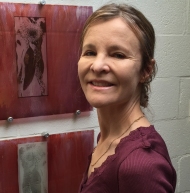
Carol Dixon followed her dream to become a composer after a career as a Health Professional, graduating as a Registered Nurse in 1988. Carol studied a 2-year major in Piano performance with Caroline Almonte (2010 -11) at the University of Melbourne, and proceeded to study composition with Julian Yu, Katy Abbott, and Kevin March. She graduated in 2015 with a Bachelor of Music with Honours majoring in music composition, under the tutelage of Julian Yu. In 2014, she was one of four successful candidates in the national Tasmanian Symphony Orchestra Composer’s School with her second orchestral work, Language of a Song.
Since her graduation, Carol has forged an independent direction – her focus is an emphasis on melodic lines. Her first commission in 2015 was Trio No. 1 for Ensemble con Fuoco, and she subsequently wrote for The Melbourne Women’s Choir, Tea Party with Alice, a lively piece for SSAA and piano, also to be performed by The Spirit of Sydney Chorus. She completed a 13 minute piece in three movements brass quintet, Terra Firma, for Best of Brass, in Brisbane. These compositions will receive public performances in 2015 by the ensembles for which they were composed. Her first Piano Trio was completed in August, 2015 for the Trio Anima Mundi composition competition. Carol is working towards further collaboration with local in interstate performing artists for her works in the coming year.
Terra Firma (2014/2015) – (watch videos here: 1 – 2 – 3)
I. Rock Chasm
II. Ice Melt
III. Shifting Sands
Inspiration for this piece came from three feats of nature on our great planet. It is programmatic in its style.
I. Rock Chasm: The very slow tempo of the outer structures, slow homophonic chords, and a descending 3-note motif in semitone steps, reflect seemingly omnipresent rock structures. Semitones are important in subsequent melodic material. Further melodic shapes – notably an ascending melodic motif – highlight shafts of light that change the character of solid vertical walls. I chose pitches in the harmonic material to portray a dense textural layer, a musical representation of still, sheer rock faces. Widely spaced harmonies add to this spaciousness. Sustained notes comprise these chords – a predominance of minor 9ths, 7th chords, and combinations of 2nds, with a particular emphasis on semitone clashes.
II. Ice Melt: An increase in overall tempo highlights slowly melting of ice in places of extreme cold – a barren landscape, where shifting melodies are mostly supported, albeit more briefly, by perfect 5ths, 4ths, tritones, or minor 7ths. Melting ice and the commencement of trickling water are heard as repeated staccato notes, trills, and quick runs of grace notes. As the melt progresses, an energetic, joyous journey ensues. Rapid exchanges of motivic material develop into the sharing of semiquaver runs between four voices. This commences with the trombone, which is joined one at a time, until all are present and arrive at a tutti closing chord – a large pool and a place of rest.
III. Shifting Sands: This movement is in perpetual motion – it is fast, like a river washing sand particles downstream, or winds whipping up desert sands. The interconnectedness of nature is reflected in the similarity of the main theme of Ice Melt and that of Shifting Sands. Repeated staccati on one pitch in Ice Melt recur in this movement. They form a backdrop against which short motives with characteristic brass articulations – staccati, accents, slurs, and short phrases – depict tossing winds. The central section uses some homophonic writing where chords and slower melodies resemble mass sand deposits.
Terra Firma was premiered in “OzBrass 4”, August 25, 2015, Ian Hanger Recital Hall, Queensland Conservatorium Griffith University.
Aldo Rafael Forte
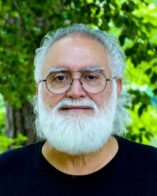
Aldo Rafael Forte is an internationally renowned composer with many published and recorded compositions to his credit. He enjoyed a distinguished 26 year career as Composer/Arranger in the USAF’s Band. His works have been commissioned/performed/recorded on five continents. Music highlights include several performances of his soprano saxophone concerto by the “President’s Own U.S. Marine Band, Col Timothy Foley, cond. and Irvin Peterson, sax, an all Forte concert at the Royal Conservatory of Music in The Hague, and a feature performance of his “Van Gogh Portraits” on the artiste’s 150th birthday in Neunen, The Netherlands.
Forte’s music is recorded on over 40 CDs including on the Klavier, Deutsche Schallplatten Berlin, Polyphonic of the UK, and Naxos (Altissimo) labels among others. The Southwest German Radio Orchestra commissioned and recorded Forte’s horn concerto (Peter Arnold, horn, Klaus Arp, Cond.) and his “Piezas Latino-Ibericas” (Das Rennquintett) for CD release. The latter has received many performances in such diverse places as Australia, South Korea, Mexico, and the U.S. In August 2018 his brand new “Concierto Sinfónico para Metales (commissioned by Armin Terzer and Best of Brass) was premiered by the group and the Cairns Brass Band, Australia.
Born in Havana, Cuba, Forte is now a U.S. citizen. Raised in Huntsville, Alabama, Forte holds music degree from Tennessee Tech and the University of Southern Mississippi.
For more information, visit www.aldoforte.com.
*BoB note: We don’t really have an excuse for including American composer Aldo Rafael Forte in this list other than that we really, really like his music; it was written for us; premiered in Australia by Australian musicians; and we love the man and his quirky character – Aldo is basically an honorary Australian!
Concierto Sinfónico para Metales (2018) – (watch video here)
Concierto Sinfónico para Metales (Brass Quintet Concerto No.2) was composed in 2018 on a commission from Armin Terzer and Best of Brass. I have composed three different editions of the work: one with symphony orchestra, one with concert band, and one for brass quintet alone. Armin Terzer has transcribed the composition for brass band. Sinfonia is cast in four movements. Each movement is progressively faster than the previous one. The composition is loosely based on the Ab minor 7th chord which opens the work. Furthermore, large intervals are contrasted with smaller ones.
Rhapsody – This first movement is the emotional heart of the concerto with several contrasting expressive melodies. The somewhat sentimental and introspective moments found in Rhapsody were subliminally inspired by the passing of my mother María Forte a few months before.
Tropical Airs (quasi Intermezzo) – This is the laid back movement of the set mimicking the
ambience of a bossa nova. Roughly in an ABA form, the tempo marking locks in all rhythms into a “cool” groove with subtle percussion interjections.
With Rumba, the third movement, the tempo and excitement builds and one finds itself in a TOTALLY unrestrained CUBAN risqué party atmosphere (ie; the true meaning of the word “rumba”). Conga drums and claves cut loose amidst syncopated “telegraph” rhythms with the occasional shouting of “RUM-BA, RUM-BA”. After wild and energetic statements we arrive at a more subdued section featuring trombone and then flugelhorn solos. Afterward the tutti sections return climaxing in a “shout chorus” statement of the rumba theme and a brief quote from Beethoven’s 7tg that is similar to the recurring Rumba rhythm! A castanets vamp segues directly to the finale of the work.
The last movement, Flamenco, is imbued with “Spanish” rhythm and flavor. From beginning to end this movement keeps building in energy and never lets up. A series of contrasting motifs keep collaging on themselves each time appearing in new garb. The writing is virtuosic throughout with specially demanding brass quintet parts taxing the piccolo trumpet. The mood is interrupted by a contrasting section based on ONLY the open strings of a classical guitar. Finally the collaging motifs return followed by an obvious recapitulation which also recalls themes from previous movements. The composition closes with ultimate excitement.
Concierto Sinfónico para Metales was premiered in its brass band version in collaboration with Cairns Brass, Owen Clarke cond., in “Brass, Sweat and Tears”, August 25, 2018, Edge Hill State School.
Wade Gregory
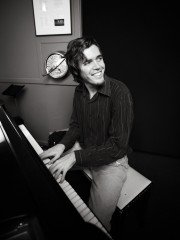
Wade Gregory can be described as a versatile, genre-hopping musician. He feels equally at home playing solo piano as he does performing in a jazz orchestra or cabaret show. His music showcases elements of a classical training, a love of jazz, and personal experience with many types of world music. A multi-instrumentalist, Wade plays and composes on piano, guitar, and clarinet.
His compositional output is equally eclectic. He has composed for settings ranging from solo piano through to jazz orchestras and world music ensembles. His Brazilian compositions range from traditional choro music to contemporary MPB, Samba and Bossa Novas. Throughout all of these, Wade has an innate ability to pay respect to various musical traditions while simultaneously experimenting with and combining musical styles. His compositions contain interesting harmonic movement married with lyrical melodies and punctuating rhythms. Recent performers of his works have included groups such as West End Composers Collective, Brisbane Contemporary Jazz Orchestra, and Enthusiastic Musicians’ Orchestra. He has also composed various pieces for solo piano and jazz piano trio.
For more information, visit www.soundcloud.com/wade-gregory.
Later & Elsewhere (2010, rev. 2013) – (watch video here)
Later and Elsewhere was originally a solo piano piece that was later arranged for 3-piece and 10-piece jazz ensemble. Like many of Wade’s tunes it started as a core nucleus of melody and harmony. These ideas were developed and orchestrated for each situation and ensemble. For this new imagining of Later and Elsewhere, Wade has extended and re-imagined the tune for the unique palette of contemporary brass quintet.
WARNING: This arrangement contains sections that feature improvisation. Some might see this as allowing the performers to develop one’s compositional ideas; others might call it lazy composing that simply pads a few extra minutes!
The original tune was composed while Wade was lying in bed with a cold and listening to the radio. Searching for a title, he misheard the Radio National announcer say “Later on Elsewhere…”.
Later & Elsewhere was premiered in “More Australian Music for Brass”, July 24, 2013, Ian Hanger Recital Hall, Queensland Conservatorium Griffith University.
Christopher Healey

…is an early career composer of art music, currently with over eighty works in his worklist. He completed his Bachelor of Music at the Queensland Conservatorium under the tutelage of Gerard Brophy, receiving the Alan Lane and A.G. Francis prizes for his compositions. Chris is now completing his PhD in Composition at the University of Queensland.
Despite being a young composer, Chris has had works performed throughout Australia, as well as in Paris, Holland, and at the Manhattan School of Music in New York.
His Sonata for Saxophone and Piano was premiered live on Holland’s Radio National service and Dornroschenschlaf was premiered at the 2018 Penninsular Music Festival. Ensembles that have performed Chris’ work include Camerata of St John’s, The Sounding Out Composer’s Collective, Ensemble Fabrique, Bricolage Percussion Duo, ANAM Percussion Department, Ensemble Francaix, The Jolivet Trio, Bron Saxophone Quartet, Best of Brass Quintet and others.
For more information, visit www.christopherhealey.net.
Visions of the Apocalypse (2017) – (watch videos here: 1 – 2 – 3)
This work was composed for Brisbane’s Brass Quintet Best of Brass (‘BoB’). The work is titled Visions de l’Apocalypse (Visions of the Apocalypse), the french title serving as an oblique reference to Messiaen’s Visions de l’Amen. The work was inspired by several of the paintings of Polish artist, Zdzisław Beksiński, who stated that he “wish[ed] to paint in such a manner as if I were photographing dreams”.
The three paintings in particular that had direct musical responses in this work, to me, suggested some apocalyptic future, and thus, the work’s title, Visions of the Apocalypse. The relationship between the art and the music is present even from the very earliest sketches of the work. The process of responding to the imagery was completely intuitive and involved singing, playing and notating at the piano musical ideas that seemed to capture a similar feeling to that conjured by the imagery. The music, however, is not programmatic in the sense that there is no explicit narrative. Instead, it might be considered more impressionistic, suggesting the imagery in much the same way as Ravel’s Gaspard similarly suggests the poetry it is inspired by.
In each scene, I found certain musical material implied, and I also found myself imagining a faint, repeated tolling of a distant and ethereal set of bells, which, similar in function to the repeated chords in Messiaen’s Quartet for the End of Time and Vignt Regards, symbolises a ‘parting of the veil’. These chords appear frequently throughout movements I and III.
Visions of the Apocalypse was recorded as part of “OzBrass 6”, August 28-29, 2018, Musica Viva Australia Studio.
Josephine Jin
Josephine Jin is a Brisbane-based composer and sessional staff in the composition department at Queensland Conservatorium Griffith University. She is currently completing her Doctor of Philosophy at the University of Queensland Graduate School of Music. In 2012, Josephine was the featured composer for the National Trust of Queensland Heritage Festival at St Mary’s Catholic Church, South Brisbane.
Recent premières or her works include the duo Eulogy at the Crossbows Chamber Music Festival, Brisbane, May 2012, and the solo piano suite Horea at the Forum Music Auditorium, Taiwan, December 2011. Horea was again performed in the U.K. in February 2012 by Australian pianist Belle Chen. Other recent performances include the duo 蜀道難 in the Encounters series at Queensland Conservatorium, and the trio The Lingering Scent of Celestial Tears in the Sounding Out Composers’ Collective series.
Josephine was given an Honourable Mention in the International Composition Competition “I Concurs Internacional de Composició Ireneu Segarra 2008-2009”.
B&B Fanfare (2012)
B&B 02 (2013)
Standing in an open field in a land of fantasy.
Surrounded by the magnificent echoes of a psalm escaping from the doors of heaven.
A magical sound coated with divine brilliance and brightness thus spiritual and transient.
It cannot last on earth.
B&B Fanfare was premiered in “Australian Music for Brass”, July 25, 2012, Ian Hanger Recital Hall, Queensland Conservatorium Griffith University.
B&B 02 was premiered in “More Australian Music for Brass”, July 24, 2013, Ian Hanger Recital Hall, Queensland Conservatorium Griffith University.
Paul Kopetz
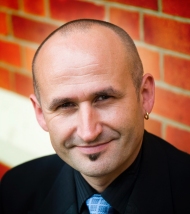
Paul Kopetz is a graduate of the University of Melbourne, Monash University, The Victorian College of the Arts, the Rotterdam Conservatorium, and Monash University. Over the years he has worked as a free-lance bass clarinettist, composer/arranger, conductor and educator. His compositions and arrangements have been performed in the USA, Hong Kong, Japan, Holland, Italy, Netherlands, China and Poland. One reviewer has described Paul’s music as “an eclectic and emotive mix of poly-stylistic programmatic music where carefully selected Pop Music idioms add currency to Contemporary Classical Music forms, all steeped in the good old tradition of fine craftsmanship”. Paul is particularly interested in exploration of rhythmic patterns in spoken text and contrapuntal melodic structures.
Paul’s most recent works include “Axolotl Rag” for brass quintet, “Prayers and Lamentations” for choir a cappella, “Islands Cycle” for strings and solo woodwind, “Of The Moon, The Sea And Of You” for piano trio, and “Oz Clerihews” for voice and small chamber ensemble. Paul is currently doing a PhD in music composition through the University of Queensland and is a represented artist with Australian Music Centre.
For more information, visit www.paulkopetz.com.
Axolotl Rag (2014) – (watch video here)
Also known as a Mexican Walking Fish, axolotl is actually an amphibian. Its larvae fail to undergo metamorphosis and as a result of this evolutionary quirk the adults remain aquatic and gilled. Just imagine life as an axolotl. Never a dull moment!
This light-hearted rag is a celebration of axolotl and all things unusual.
Axolotl Rag was premiered in “OzBrass 4”, August 25, 2015, Ian Hanger Recital Hall, Queensland Conservatorium Griffith University.
Mitchell Leigh
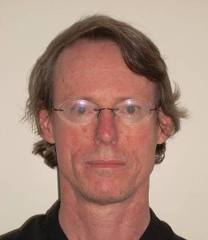
Mitchell Leigh commenced his musical studies at the Queensland Conservatorium of Music, where his teacher was Max Olding. He subsequently studied at the University of British Columbia in Vancouver with Robert Silverman. He returned to Brisbane in 1990 and since then has established a significant career, primarily as an accompanist but also on occasion as a soloist. He has accompanied many world-class instrumentalists, including both touring soloists and principal players in major orchestras. He has accompanied at numerous International conferences, such as the International Double Reed Conference (Melbourne, 2005), the International Horn Society Conference (Brisbane, 2010), and the international Clarinet Society Conference (Melbourne, 2011).
Mitchell has performed many times as a member of the Qld Symphony Orchestra, and has also performed in numerous chamber groups throughout Queensland and other parts of Australia. He has been on the staff of the Qld Conservatorium since 1991 and was a staff member of the QUT music programme from 1993 until 2011. He also continues to work in a casual capacity at the University of Qld Music Department. In the vocal area he has worked on numerous occasions for Opera Queensland as a repetiteur, accompanist for various concerts and workshops, and in the pit orchestra for various productions. He also is an experienced choral accompanist, having accompanied numerous choirs around the Brisbane area.
Mitchell is also a composer. He has composed numerous works for various instrumental combinations. These works include, among others, a saxophone quartet (1997 rev. 2012), a piano trio (1997 rev. 2012) and a tuba concerto (2011) which was premiered in 2011 by QSO principal tuba Thomas Allely.
The Crossing (2013)
The Crossing, for brass quintet, was written in memory of a ferry voyage I experienced in Canada some years ago between Vancouver and the city of Victoria, on Vancouver Island. Although the voyage was only of a couple of hours duration, memories of the cool, clear weather, calm sea, beautiful Canadian scenery, and the looming sight of Vancouver Island, have remained with me.
The Crossing was premiered in “More Australian Music for Brass”, July 24, 2013, Ian Hanger Recital Hall, Queensland Conservatorium Griffith University.
Catherine Likhuta
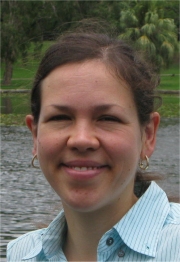
Catherine Likhuta (b. 28th May 1981 in Kyiv, Ukraine) is an Australian-based composer, pianist and recording artist. Her music exhibits high emotional charge, programmatic nature and rhythmic complexity. Catherine received her Bachelor’s degree in jazz piano from Glière Musical College in 2000, followed by a five-year degree in composition from the Ukrainian National P. Tchaikovsky Academy (Kyiv Conservatory). Subsequently, she moved to the United States, where she worked under the guidance of Dana Wilson and Steven Stucky, before becoming a freelance composer. Since 2012, Catherine lives in Brisbane, QLD Australia. She is currently pursuing a PhD in Composition at the University of Queensland under the supervision of Robert Davidson.
Catherine’s works have been performed throughout North America, Europe and Australia by many prominent soloists and ensembles, such as Adam Unsworth, Griffin Campbell, Ronald Caravan, Gabriel Bolkosky, Emma Di Marco, HD Duo, Atlantic Brass Quintet, Ricochet, Barega Saxophone Quartet, Queensland Symphony Orchestra Horns, Cornell University Wind Ensemble and Wind Symphony, and the Orchestra of the National Radio of Ukraine. Her music has been performed at several international events, including the International Horn Symposium (2014, 2015) and World Saxophone Congress (2015). Her recent honours and awards include the first prize at the 2014 International Horn Society Composition Contest, a grant from the Australia Council for the Arts, and membership of the Union of Composers of Ukraine.
Catherine enjoys performing as a pianist, often playing her own music. She was the soloist on the premiere of Out Loud, her piano concerto commissioned by the Cornell University Wind Ensemble, and the pianist on Adam Unsworth’s CD Snapshots. Her music can be heard on Albany and Equilibrium Records.
For more information, visit www.catherinelikhuta.com.
It Comes and Goes (2013) – (watch video here)
It Comes and Goes was written during a part of my pregnancy. The title and several key musical ideas in the piece reflect on both predictable and unpredictable patterns in the behaviour of the little person inside. Babies-to-be move when they please and rest for as long as they want. Trying to guess their next move is an interesting puzzle. They can often be cheeky, pretending they are not even there at all, but after a little while, they always remind you of their existence. Musically, the piece has some phrases that come, leave, and then make a return. The same applies to the texture: it is very flexible, which seems to be a less traditional approach to writing for brass quintet. The texture becomes almost deconstructed at times, adding a new dimension to the unpredictability. The character of the music ranges from serious, almost dramatic, to jazzy and light-hearted. I never thought pregnancy could be inspiring, but it touches every aspect of one’s life, and doesn’t leave one much choice but to let it inspire music as well.
It Comes and Goes was premiered in “OzBrass 4”, August 25, 2015, Ian Hanger Recital Hall, Queensland Conservatorium Griffith University.
Andrew McNaughton
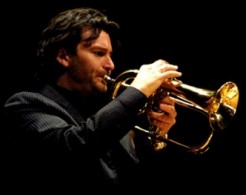
Andrew McNaughton is an Australian based trumpet player, composer and jazz educator who has performed and recorded as a featured soloist in over 20 countries through Western Europe, Scandinavia, the former U.S.S.R., South-East Asia, America and Australia.
He is an enthusiastic composer who values simplicity, beauty and humour. His work has been featured at the International Trumpet Guild (New York) and the Australasian Clarinet and Saxophone Conference (Brisbane) as well as for both Playbox and Melbourne Theatre Companies.
For more information, visit www.andrewmcnaughton.com.au.
Driefacher (2012) – (watch video here)
Driefacher (pronounced “dree-facher”) was inspired by some Kazakh folk music I heard while on tour in Almaty, Kazakhstan with a German world music group, Unterbibeger Hofmusik. I took the idea of an odd time ostinato to extend a traditional German dance form, the Zwiefacher. A Zwiefacher (pronounced “tsvee- facher”) alternates between duple and triple time – the German prefix “zwie” indicates duality and is similar to the word for two: “zwei”. There is some conjecture as to whether “zwie” refers to the time duality or the intertwining of the dancers. In any case, my Driefacher is a play on the German word for three, “drei”. The piece has essentially three sections and the main section has three time signatures. It is nevertheless, not meant as an intellectual exercise and retains its folk roots—I hope—with a minor swing blues in its midst.
Driefacher was premiered in “Australian Music for Brass”, July 25, 2012, Ian Hanger Recital Hall, Queensland Conservatorium Griffith University. It is also a featured work in BoB – Best of Brass’ Musica Viva in Schools show.
Perception & Reality (2015)
It’s a Fanfare plus… another bit. Andrew wrote the fanfare earlier this year for a larger ensemble and initially thought a quintet arrangement would be good, but then it turned into something else. You will still hear the fanfare at the beginning, but then it morphs into an exploration of harmony and sounds, interweaving melodic material throughout.
Driefacher was premiered in “OzBrass 4”, August 25, 2015, Ian Hanger Recital Hall, Queensland Conservatorium Griffith University.
David Montgomery

David is a composer, performer and music educator.
David is the Principal Percussionist of the Queensland Symphony Orchestra and a member of the Australian World Orchestra. Previously he worked as a freelance percussionist in Sydney with the Australian Opera and Ballet Orchestra, the Sydney Symphony Orchestra, the Australian Chamber Orchestra and the Australian Brandenburg Orchestra.
As a composer, he has had works commissioned by Opera Queensland, Queensland Symphony Orchestra, Isorhythmos and ABC Radio National. David has also worked as a sound designer and composer for the Queensland Theatre Company and La Boite Theatre on productions such as A Streetcar Named Desire and Heroes.
Recent commissions include a marimba duet for Sonamus Duo in 2013 and a horn quintet for the Queensland Symphony Orchestra horn section to be performed at the 2014 International Horn Convention in London.
In 2013 he completed a consultancy for the Australian Music Examinations Board to creat a new percussion syllabus spanning 12 levels, from Preliminary to Licentiate of Music. The consultancy included composing new works for each grade, studies, exercises, and numerous arrangements for the syllabus.
His children’s opera The Sound Garden, commissioned by Opera Queensland in 1999, has been performed by West Australian Opera, Opera Queensland and Opera Australia with 2000+ performances to some 30,000 Australian school students between 2000 and 2011.
David is the Artistic Director of Isorhythmos percussion ensemble and editor of Isorhythmos Publications. The ensemble comes together on a project by project basis.
David taught at the Queensland Conservatorium between 1998 and 2012. He is an active and passionate educator and works regularly within the school environment conducting workshops and participating in performance programs. Such programs often being in partnership with Isorhythmos. His teaching experience spans primary through to graduate tertiary level and he will be a guest teacher at the Australian National Academy of Music toward the end of 2014.
David is currently completing a Doctorate in Musical Arts at Griffith University.
BBQ4 – A bit of Celtic Fanfare (2014) – (watch video here)
BBQ4 is an arrangement of a horn quintet commissioned by the Queensland Symphony Orchestra Horn Section to perform in a concert they are giving in London as part of their presentation for the 2014 International Horn Convention.
The commission brief was to compose some light relief in a program that already had some heavy compositional and playing demands. So, I composed 4 short movements, each depicting a different cliché of style and mood, light-hearted in intention, and with a touch of irony thrown into the mix.
The 4 movements are “Incognito”, “It’s a ‘70s thing”, “Chorale”, and “A bit of Celtic fanfare”. BBQ4 is an arrangement for BoB Brass Quintet of the 4th movement, A bit of Celtic fanfare!
BBQ4 – A bit of Celtic Fanfare was premiered in “OzBrass 3”, July 27, 2014, St Andrews South Brisbane.
Bob Schultz
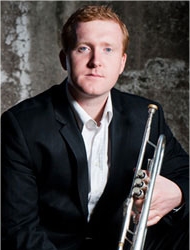
As one of the leading jazz and crossover trumpet soloists in Australia, Bob has appeared nationally and internationally with groups and artists such as The Temptations, The Four Tops, The Black Sorrows, The Saints, Tom Burlinson, Wilson “Saoko” Monyama, Jimmy Barnes, Queensland Symphony Orchestra and in festivals including Falls Festival, Bellingen Global Music Carnival, Woodford Folk Festival, QMF and Sydney Salsa Congress. Bob is also a member of Brisbane-based group Chukale and featured on their upcoming debut album featuring the legends of Cuba (members from the Buena Vista Social Club and The Gypsy Kings). Bob is also actively involved in education through the Queensland Young Conservatorium, Sheldon College (affiliated with the Australian School of the Arts), and can regularly be found giving workshops and masterclasses in Queensland and beyond. Bob Schultz is a Bach Artist.
Conditioning (2014)
My original inspiration for this piece was from the humble air conditioner in my teaching studio. What started as a simple improvisation around the sound of ‘G’ that was coming from the air conditioning unit, quickly morphed into an exploration of modal harmony. Throughout my studies in jazz, I have always been very interested in the way harmony works, how it can take a melody and shape it into something new simply by changing a few chords.
Contained within this piece is the use of the Lydian, Dorian, mixolydian and Spanish Phrygian modes; but I prefer to think of them as ‘sounds’. To go along with the Spanishy flavour, I rhythmically introduced the Afro Cuban 6/8 clave. This underpins the middle section of the piece and is passed around the ensemble at various stages. This work contains a number of sections, however you should always be able to hear one familiar melody or pattern that links all of the sections together.
Conditioning was premiered in “OzBrass 3”, July 27, 2014, St Andrews South Brisbane.
Timothy Tate

Born in the United Kingdom and immigrating to Australia early in life, Timothy writes music in which drama, expressivity and simultaneity are combined resulting in an exciting musical landscape for listeners and players alike.
Timothy’s music has been performed by leading performers and ensembles across Australia including: Adelaide Symphony Orchestra, Alpha Crusis Ensemble, The Badinerie Players, Chronology Arts, Sarah Curro and The Song Company. He has had commissions from ensembles and artists including the Adelaide Symphony Orchestra, Queensland Conservatorium Symphony Orchestra, Sarah Curro, Alpha Crusis Ensemble, Chronology Arts, The Song Company, The Badinerie Players and the Queensland Mandolin Orchestra. Timothy is a graduate of the Queensland Conservatorium where he studied composition with Gerard Brophy, receiving a Bachelor of Music with first class honours in Composition, and has also received tutelage from composers Brian Howard, Martin Bresnick, James Ledger, Stephen Stanfield and Elliott Gyger.
Timothy has been the recipient of several awards including The Barbara Blackman Song Composing Competition (2007), MTAQ Gold Coast Composing Competition (2009), The Alan Lane Composition Prize (2010), The Harris Peck Composition Prize (2010) and QCGU Owen Fletcher Postgraduate Prize (2011). In 2012 Timothy was selected for a the OzAsia Festival Composer Residency, with the Adelaide Symphony Orchestra, writing a work which incorporated the ancient Chinese instrument the ‘guqin’.
Currently based in Brisbane, Australia, Timothy is an active violist performing regularly with the Sinfonia of St Andrew’s, he is a co-founder of ensemble fabrique and also conducts/directs a variety of ensembles around Brisbane.
For more information, visit www.timothytate.com.au.
after this, our exile (2013) – (watch video here)
after this, our exile creates a scenario in which five musicians work together or against each other to try and make sense of why they are together. The musical material presented in the beginning two minutes of the piece grows organically throughout the piece forming the basis which the musicians work from. It is how the musicians interpret and work with this musical material which creates both conflict and co-operation resulting in an exciting musical dialogue.
after this, our exile was premiered in “More Australian Music for Brass”, July 24, 2013, Ian Hanger Recital Hall, Queensland Conservatorium Griffith University.
Kerry Turner
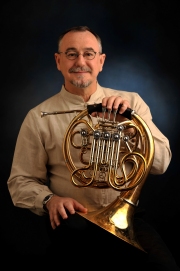
Kerry Turner has been writing music since he was 10 years old. At the age of 11, he won the San Antonio Music Society Composition Contest. Six years later, he was awarded Baylor University’s first prize in its composition contest with a large scholarship to that institution. He continued his studies at the Manhattan School of Music. After grading, he was the recipient of a Fulbright scholarship to study with Hermann Baumann at the Stuttgart College of Performing Arts.
In 1985, he joined the American Horn Quartet. It was then that he once again decided to put pen to paper to composer for this ensemble. Kerry composed his Quartet #1, which subsequently won first prize in the International Horn Society Composition Contest. Other hits for horn quartet followed such as the thrilling tone poem “The Casbah of Tetouan,” his Quartet #2 “Americana,” and Quartet #3 which once again was awarded a prize at the IHS Composition Contest in ’96.
By this time, Mr. Turner began to receive commissions to compose for the horn in different ensemble combinations. The IHS Meir Rimon Foundation commissioned his dramatic “Six Lives of ack McBride”. Following that, the Freden International Music Festival (Germany) commissioned a brass quintet, “Ricochet,” which has since become one of his most successful works.
Mr. Turner has been a guest lecturer at several notable institutions including the Royal Academy of Music, Oslo; the Academy of Fine Arts, Hong Kong; the Manhattan School of Music; the Juilliard School; and the Winterthur Conservatory in Switzerland. His works have been heard in major concert halls around the globe and have been recorded extensively, not only by the AHQ but by reputable soloists and chamber ensembles worldwide. His music has been performed and recorded by chamber ensembles from the NY, Berlin, and Vienna Philharmonics and the Chicago Symphony.
For more information, visit www.kerryturner.com.
*BoB note: While not technically an Australian composer, Kerry Turner’s Waltzing Matilda features this quintessential Australian tune, was written for our OzBrass series, is an excellent work, and is therefore included in this series.
Waltzing Matilda (2016) – (watch video here)
Waltzing Matilda is an arrangement for brass quintet of a previous work by Kerry Turner: In 2010, The American Horn Quartet was invited to be the Featured Artists at the International Horn Society’s International Symposium in Brisbane Australia. To commemorate this occasion, Kerry Turner decided to compose a special piece, which would feature the famous Australian folksong “Waltzing Matilda.” This bouncy melody is Australia’s most widely known bush ballad, and has been referred to as “the unofficial national anthem of Australia”. After a literal statement of the melody, the music suddenly sweeps the listener back 200 years to the age of exploration. This swashbuckling music is gripping with adventure and excitement. However, there is a second “Waltzing Matilda,” namely, the tragic ballad from World War One entitled “The Band Played Waltzing Matilda.” This song describes the disastrous lost of life by Australian and New Zealand soldiers who received their “baptism of fire” at the battle of Gallipoli in Turkey. According to several of the composer’s Australian acquaintances, this somber ballad holds particular meaning and importance in the “Land Down Under.” Mr. Turner therefore incorporated a middle section which represents this tragic period in the country’s history.
“Waltzing Matilda” is a brilliantly virtuoso romp, which demands refined ensemble skills as well as highly developed technical ability. The piece was composed in Leipzig, Germany in May 26-28, 2010 and lasts approximately 6 minutes.
Waltzing Matilda was premiered in “Masterworks Spectacular”, July 30, 2016, Crosswell Hall, Cairns State High School.
Ryan Walsh
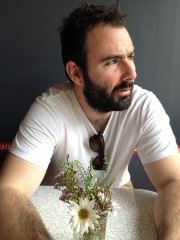
Ryan Walsh (b.1980) is a Brisbane-based composer and producer.
After graduating in 2002 from the Queensland Conservatorium Griffith University (QCGU), Ryan went on to further study in Europe and spent a number of years working in Venezuela and Brazil. He returned to Australia in 2009 to complete a Masters in Composition & Musicology culminating in him being awarded the 2011 Harris Peck Prize for composition.
Outside the concert hall he works regularly as a screen composer and is also the founder of production studio SST Workshop whose multidiscipline work has been commissioned by clients as diverse as NEC Japan & Sao Paulo Fashion Week.
Other current projects include music for the upcoming Australian feature film The Turning, as well as an orchestral work for the Tasmanian Symphony Orchestra.
For more information, visit www.ryanwalshmusic.com.
Perpetual Moment (2013, rev. 2014) – (watch video here)
What happened before us humans were around? History didn’t just start with us. For millions of years there were cataclysmic, spectacular forces at play.
This piece is a small attempt to represent things that might have happened in the distant past that went unwitnessed. Astronomical, geological, biological .. all of these seemingly unrelated events made up the “perpetual moment” before we started writing things down.
Perpetual Moment was premiered in “More Australian Music for Brass”, July 24, 2013, Ian Hanger Recital Hall, Queensland Conservatorium Griffith University. The revised version was premiered in “OzBrass 3”, July 27, 2014, St Andrews South Brisbane.
Julian Yu
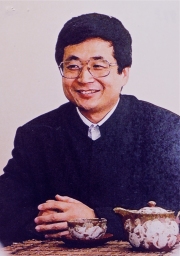
Julian Yu, who was born in Beijing on 2 September 1957, surprised his non-musical family by writing his first composition at the age of twelve. He went on to study composition at the Central Conservatory of Music in Beijing and later joined the teaching staff there. From 1980 to 1982 he studied at the Tokyo College of Music under Joji Yuasa. In 1985 he settled in Australia. In 1988 Julian Yu was a composition fellow at Tanglewood, where he studied under Hans Werner Henze and Oliver Knussen. Julian Yu has received more than twenty awards for composition since 1987, including the Koussevitzky Tanglewood Composition Prize as well as awards in competitions in Japan, Italy, France, the USA and his adopted Australia. In 1991 and 1994, respectively he won the inaugural and the subsequent Paul Lowin Award for orchestral composition with Hsiang-Wen (Filigree Clouds) and Three Symphonic Poems. There is no higher national award available to an Australian composer. In October 1995 his Philopentatonia was given its world premiere by the London Sinfonietta at the South Bank, and this work was premiered in France in March 1996 by the Ensemble InterContemporain. Oliver Knussen, who also gave the US premiere of Wu-Yu, conducted the first performance in the UK of Great Ornamented Fuga Canonica. Wu-Yu was given its UK premiere by the BBC Welsh in January 1996 under the baton of George Benjamin. Yu’s most recent work for the Australian Broadcasting Corporation, Sinfonia Passacaglissima, was given its world premiere in September 1995 by the Tasmanian Symphony Orchestra. Julian Yu’s music has been featured at international contemporary music festivals such as the Munich Bienniale, the ISCM World Music Days and the Huddersfield Contemporary Music Festival. While resident in China, he diversified by writing music for television, radio, films, dance and stage plays.
For more information, visit Julian Yu @ the Australian Music Centre.
The Art of Fudge (2013/2014)
1. The Tragedian
2. J.S. The Great
3. A Phone Call to Mozart
4. What for Elise?
5. Finished Symphony
6. Stepping Up Birthday
7. Harmonic Phrases at an Exhibition
8. Caterpoint
9. Enjoy Hanon
10. To Comrade Schostakovich
Hopefully, most people seeing this title will first misread it as “The Art of Fugue” and think immediately of J.S. Bach, and this analogy is intended. The Art of Fudge is a collection of famous classical snippets which have been humorously “fudged”, that is, twisted and played with, to create new and enjoyable experiences — the birth of the new out of the old. I hope performers and listeners alike will find something to chuckle over, and am very proud that Best of Brass is giving this piece its world premiere performance.
“Harmonic Phrases at an Exhibition” and “Enjoy Hanon” from The Art of Fudge were premiered in “The Chinese Connection”, September 13, 2013, Ian Hanger Recital Hall, Queensland Conservatorium Griffith University.
The complete The Art of Fudge was premiered in “OzBrass 3”, July 27, 2014, St Andrews South Brisbane.
Twinkle Variations (2016) – arr. Carol Dixon – (watch video here)
The Twinkle Variations are a set of variations on the tune “Twinkle, Twinkle Little Star”, originally written for piano solo as a “Young Person’s Guide to Composition”. A selection of these variations was arranged for brass quintet by Julian Yu’s composition student, Carol Dixon. They are:
“Classical” Variations:
Hanon: “Canon on Hanon”
Mozart: “Rondo alla Twinka”
Shostakovich: “Piano Concerto”
Bartok: “In bagpiper’s style”
Beethoven: “Für Estelle”
Strauss: “Radetzky March”
Bizet: “Habanera from Carmen“
Ravel: “Bolero”
”Modern Variations”
Disco
Ragtime
Jazz
Blues
Boogie
And a Tchaikovsky: “Rondo” encore.
Anybody remotely familiar with any of these famous classical works or popular styles will instantly recognise the genius that went into adapting the “Twinkle” melody to fit the pre-existing form, as well as the craftsmanship Carol Dixon displays in her adaptation for brass quintet.
“Twinkle Variations” was premiered in “OzBrass 5”, August 3, 2016, Innisfail Conservatorium
